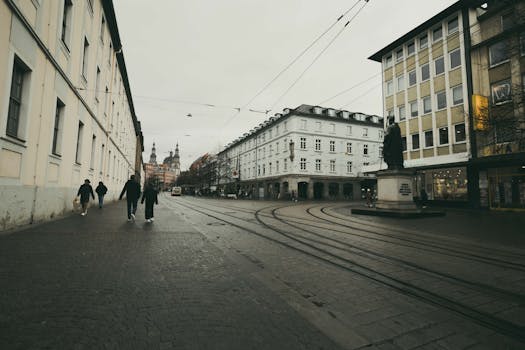
Urban Green Spaces: The Future of Outdoor Living in European Cities by 2025
Urban Green Spaces: The Future of Outdoor Living in European Cities by 2025 is becoming increasingly important for the well-being of citizens. As the world becomes more urbanized, the need for green spaces in cities is growing. European cities are at the forefront of this movement, transforming urban areas into green spaces that promote sustainability, improve air quality, and enhance the quality of life for citizens.
Introduction to Urban Green Spaces
Urban green spaces are areas of vegetation, such as parks, gardens, and green roofs, that are integrated into the urban environment. These spaces provide numerous benefits, including reducing air pollution, mitigating the urban heat island effect, and providing habitats for wildlife. In addition, urban green spaces offer recreational areas for citizens, promoting physical activity, mental well-being, and social interaction.
Benefits of Urban Green Spaces
- Improved air quality: Urban green spaces absorb pollutants and particulate matter, improving air quality and public health.
- Climate regulation: Green spaces help regulate the urban microclimate, reducing the urban heat island effect and mitigating the impacts of climate change.
- Biodiversity conservation: Urban green spaces provide habitats for urban wildlife, supporting biodiversity and ecosystem services.
- Recreational opportunities: Green spaces offer areas for physical activity, social interaction, and mental relaxation, improving overall well-being.
- Economic benefits: Urban green spaces can increase property values, attract businesses and tourism, and stimulate local economies.
European Cities Leading the Way
Several European cities are leading the way in creating and promoting urban green spaces. For example:
- Stockholm, Sweden: The city has implemented a comprehensive green infrastructure plan, incorporating green roofs, walls, and urban parks to reduce stormwater runoff and improve air quality.
- Copenhagen, Denmark: The city has invested heavily in green spaces, including the creation of a carbon-neutral harbor district and a network of green bike lanes.
- Barcelona, Spain: The city has implemented a superblock program, pedestrianizing streets and creating green spaces to reduce traffic congestion and improve air quality.
Challenges and Opportunities
While urban green spaces offer numerous benefits, there are also challenges to their implementation and maintenance. These include:
- Space constraints: Urban areas often have limited space available for green spaces, requiring creative solutions and partnerships between stakeholders.
- Funding: Implementing and maintaining urban green spaces requires significant investment, which can be a challenge for cities with limited budgets.
- Community engagement: Urban green spaces require community engagement and participation to ensure their success and longevity.
Conclusion
In conclusion, Urban Green Spaces: The Future of Outdoor Living in European Cities by 2025 is a vital component of creating sustainable, livable, and resilient cities. As European cities continue to lead the way in promoting urban green spaces, other cities around the world can learn from their experiences and implement similar initiatives. By investing in urban green spaces, cities can improve the health, well-being, and quality of life for their citizens, while also contributing to a more sustainable and environmentally conscious future.






